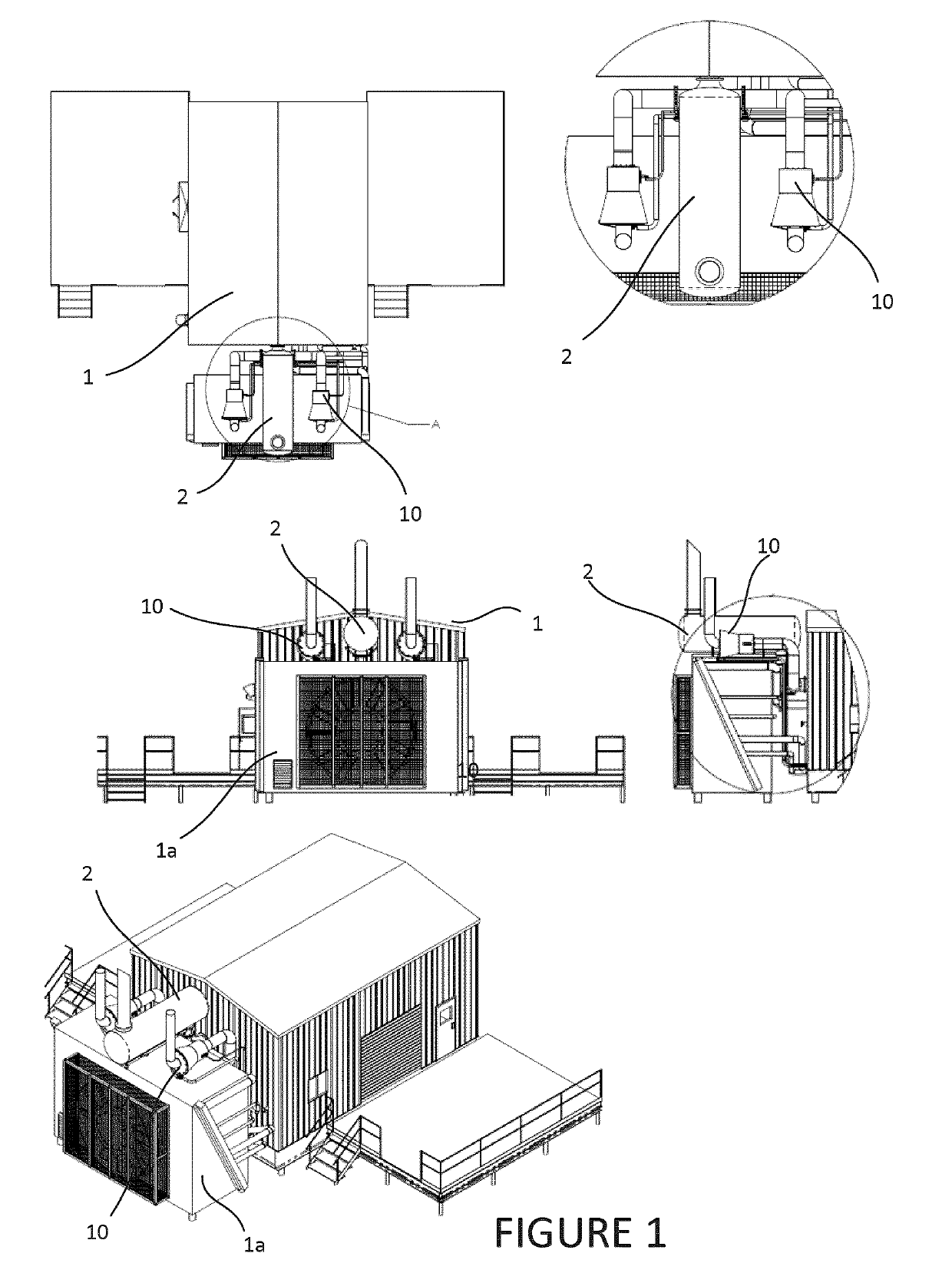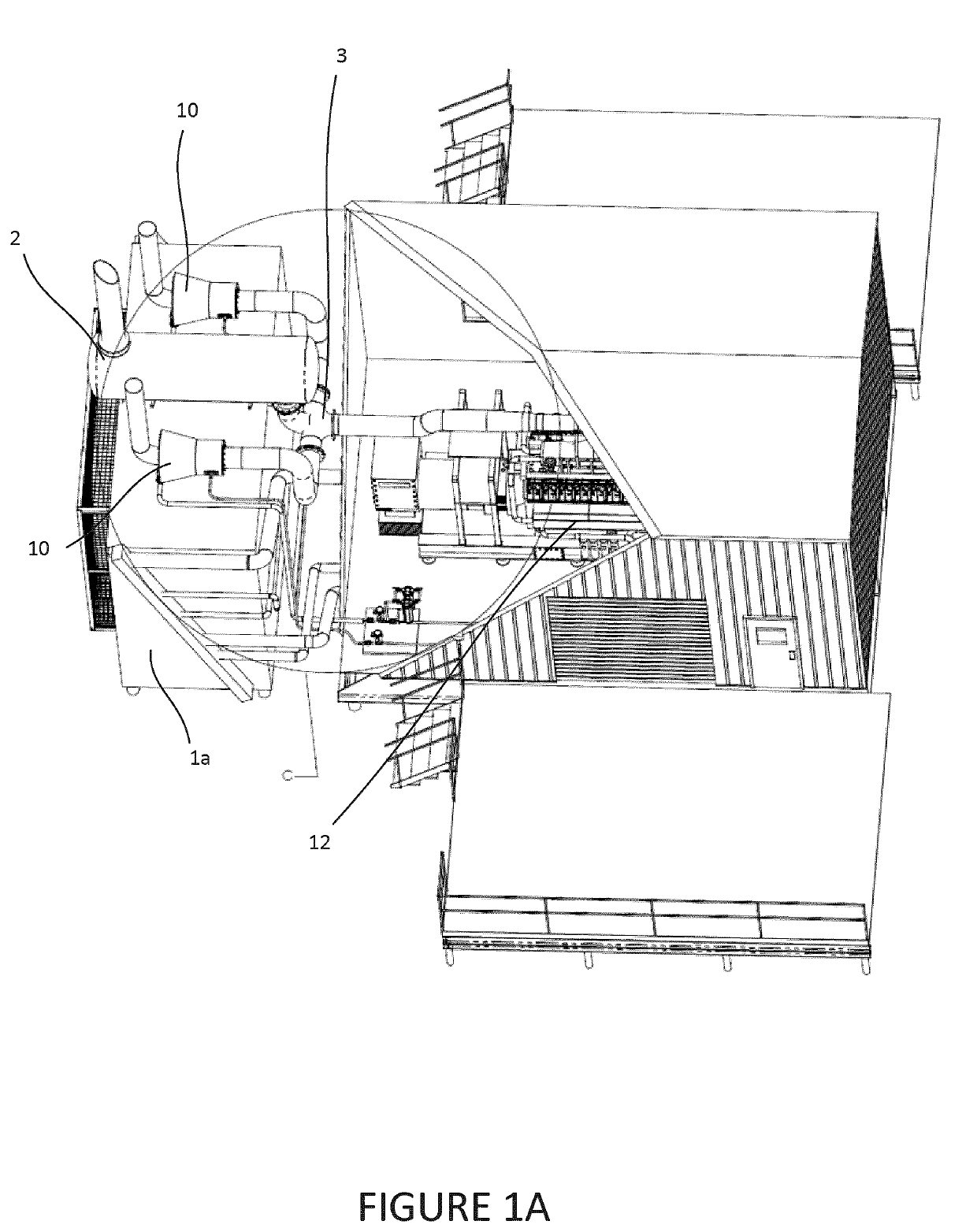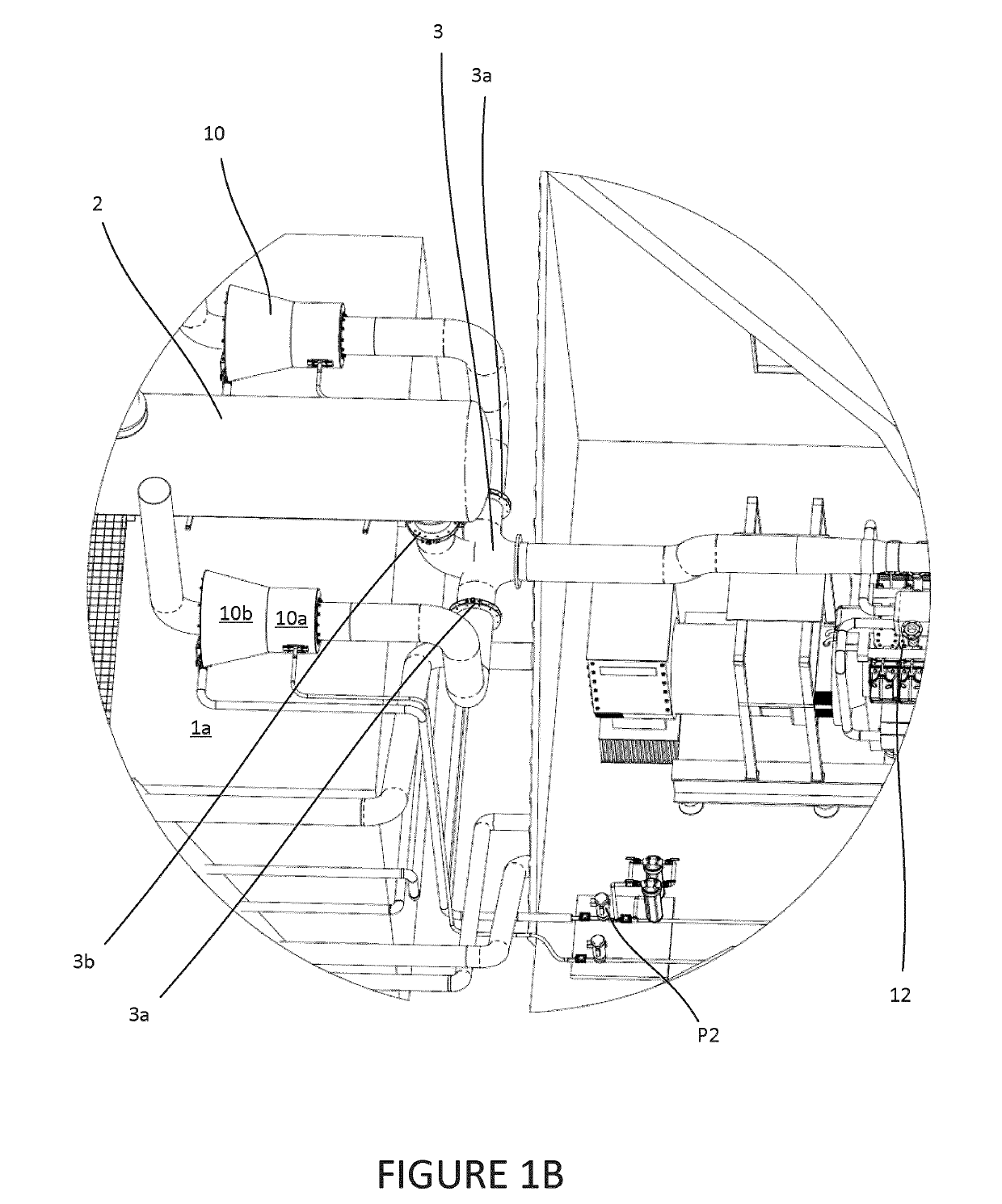Apparatus, systems and methods for management of raw water and emissions utilizing heat and/or pressure energy within combustion gas sources
a technology of raw water and energy management, applied in the direction of quarries, evaporator regulation/control, separation processes, etc., can solve the problems of inability to mobilely treat flue gasses, scaling and/or plugging of lines, and increasing the problem of fine particles
- Summary
- Abstract
- Description
- Claims
- Application Information
AI Technical Summary
Benefits of technology
Problems solved by technology
Method used
Image
Examples
Embodiment Construction
Rationale and Introduction
[0184]The subject invention seeks to improve the efficiency of the vaporization of waste water utilizing “waste” heat and pressure from a heat source such as an engine (e.g. an engine / generator combo unit or exhaust from steam generators, turbines, boilers, flares, flame exhaust and the like) so as to effect a reduction of the volume of raw water and the concentration of contaminants within the raw water and / or the exhaust gasses. The invention also provides a low-maintenance solution for water vaporization by reducing the effects of scaling. In addition, the invention provides effective systems and methods to muffle ICE engine noise during water vaporization processes.
[0185]In various embodiments, the invention also seeks to perform one or more of the following:[0186]a. reduce or minimize new energy input over and above the primary heat source from an ICE, combustion gas, flare gas or other similar source;[0187]b. minimize pressure drop related to water va...
PUM
| Property | Measurement | Unit |
|---|---|---|
| pressure | aaaaa | aaaaa |
| pressure | aaaaa | aaaaa |
| size | aaaaa | aaaaa |
Abstract
Description
Claims
Application Information
 Login to View More
Login to View More - R&D
- Intellectual Property
- Life Sciences
- Materials
- Tech Scout
- Unparalleled Data Quality
- Higher Quality Content
- 60% Fewer Hallucinations
Browse by: Latest US Patents, China's latest patents, Technical Efficacy Thesaurus, Application Domain, Technology Topic, Popular Technical Reports.
© 2025 PatSnap. All rights reserved.Legal|Privacy policy|Modern Slavery Act Transparency Statement|Sitemap|About US| Contact US: help@patsnap.com



